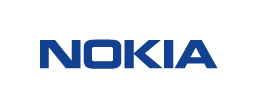From Activities to Impact at Scale - ESG Drives Value
by Melissa Schoeb

Late last week at our global employee townhall, we had the opportunity to introduce Nokia’s enhanced Environmental, Social and Governance (ESG) strategy. We were joined by people from across the company who shared how they are working to bring this new strategy to life. Nokia can play a critical role in solving some of the world's biggest challenges and while we will continue to reduce our environmental impact in our own operations, foster the health and safety of our employees and contractors, and promote an inclusive culture that values ethics and compliance—we need to do more.
This new strategy has been developed across the company leveraging Nokia’s portfolio strengths as well as Bell Labs research to accelerate our positive impact, create new value opportunities for Nokia’s customers, and deliver sustainable value creation for shareholders.
It is embedded into our business and technology strategies to ensure that sustainability is a fundamental part of how Nokia develops technology and makes business decisions. This strategy is built on five strategic focus areas.
Environment
Our first focus area looks at how we manage the environmental footprint of our own operations, aiming to be the leader in energy efficiency and circular practices.
In 2021, 93 percent of our emissions came from products in use, that is the energy required to run our products in our customers networks. This, coupled with the expected increase in capacity over the next 10 years, makes the energy efficiency of our products a clear priority. We work to be the leader in energy efficiency in silicon, software, and systems and create opportunities to optimize across the network with energy orchestration and green operations. At the same time, we aim to accelerate our first mover ambition in energy efficiency in 5G-Advanced and 6G through early engagement in standardization and ecosystem development.
This is an area of constant innovation, evidenced by the launch of our latest liquid cooling solution, that can reduce a base station’s cooling system energy consumption by up to 90 percent, as well as the energy efficiency improvement of our product portfolio from one generation to the next. This strategy will build on this track record and accelerate.
In circularity we focus on opportunities to promote hardware circularity and manage the sourcing and reuse of key source materials. We want to leverage our existing waste management processes, where 97 percent of products that we take back are diverted from landfill and proactively increase product take back, working with our customers when they modernize their networks or when products reach their end of life so that those products can be refurbished, used for replacement parts, or recycled.
At the same time, we look to increase the use of recycled materials in our products. This means increasing the usage of recycled plastics, steel and aluminum in our product design.
Industrial Digitalization
The use of connectivity and digitalization enables a global reduction in carbon emissions, which can be almost ten times greater than the carbon footprint that it generates. This is because of the opportunity that connectivity and digitalization provide in decarbonizing industries and cities and is why we often say, “there is no green without digital”.
We aim to provide connectivity and digital solutions that sustainably transform physical industries reducing their impact on the planet, making them safer and more productive. To achieve this, we focus on the ‘Green Digital’ proposition in our Enterprise portfolio and work within our eco-system to better measure this enablement effect and articulate its business case.
One example is our work with A1 for Siemens and their Vienna campus microgrid, where we provide a private network that allows the microgrid assets to communicate with each other in real time - based on the movement of around 1,000 datapoints from 34 devices. This one microgrid was directly responsible for saving around 100 tons of CO2 in 2021, with double these savings expected in 2022.
Another example is our own factory in Oulu which is a fully digitalized factory that incorporates all 5G+ technologies to drive machining and assembly using robotics, autonomous transportation through mobile robots, advanced quality control methods, including video analytics, and maintenance schedules driven by Augmented Intelligence / Machine Learning recommendations based on real-time asset condition data.
Our factory has been recognized as a World Economic Forum lighthouse, which through connectivity, robotics, automation and digitalization has increased factory output by 250 percent whilst maintaining the same level of resources and energy consumption. We saw a reduction of energy consumption per produced product by 54 percent and 70 percent of CO2 emissions have been avoided. In addition, both process defects and product time to market reduced by half.
Security & Privacy
We position security and privacy to become the cornerstone of our reputation and product proposition. We will work to ensure a common security baseline for products and services and accelerate our security strategy ambitions. This involves reinforcing the Nokia Design for Security framework and driving end-to-end product security testing initiatives like the ASTaR Lab, as well as leveraging our own innovative portfolio offerings. An example of this in action would be ANYSec, which provides low-latency, native encryption for any transport on any service, at any time and for any load conditions without impacting performance.
Bridging the Digital Divide
Despite the acceleration of digitalization during COVID, the digital divide has widened - both for individuals and for many small and medium enterprises who were not set up to participate in the digital economy. We can leverage our broad product portfolio, as well as focused strategies with non-terrestrial network operators, to connect different demographics to broadband level speeds in both fixed and wireless. In addition to connectivity, we also focus on building on our existing digital and technology training, such as the 5G certification program.
We aim to be a bridge for digital inclusion through our connectivity and digital skills building solutions, creating more inclusive access to healthcare, education and employment, and providing new business opportunities for SMEs which generated about two-thirds of net new jobs in the US between 2000-2019.
Responsible Business
We will continue to take a proactive and values-driven approach to drive responsible business practices internally and in our value chain and work closely with our customers and suppliers to engage on systemic issues related to the environment, the misuse of technology, and human rights. We are also strengthening our existing collaboration with important customers by focusing on key ESG topics across our industry.
To further explore our ESG strategy and find additional examples of the great work Nokians are doing please visit our ESG strategy hub.

